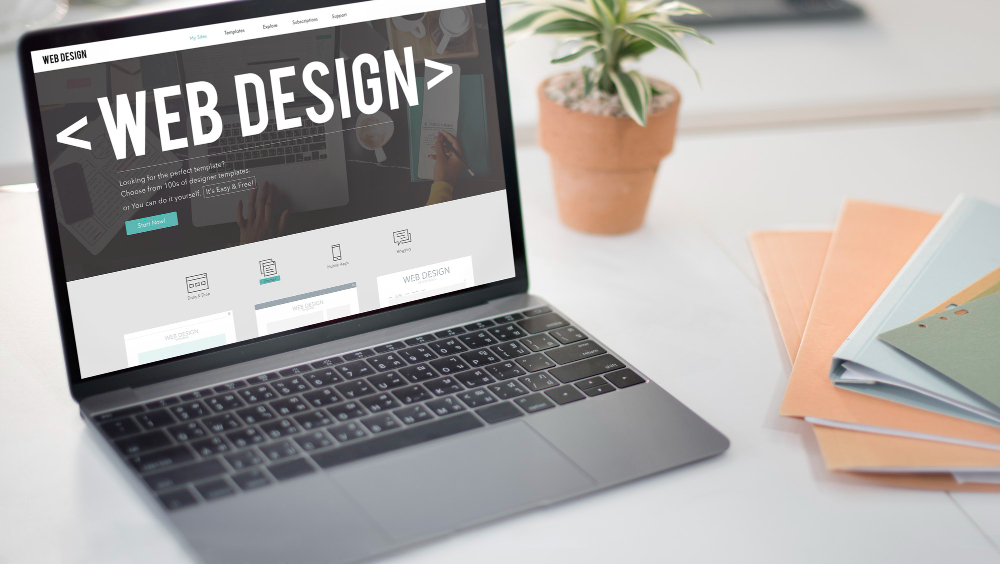In the dynamic realm of the internet, where first impressions are everything, a well-designed website is the key to capturing and retaining the attention of users. Web design is not just about aesthetics; it's a strategic blend of art and science aimed at creating a seamless digital experience. Whether you're a seasoned web designer or a business owner venturing into the online space, understanding the seven essential steps in web design can pave the way for success.
- Define Your Purpose and Goals : Before delving into the visual aspects of web design, it's crucial to define the purpose and goals of your website. What message do you want to convey? Who is your target audience? What actions do you want users to take? Answering these questions helps set the foundation for the entire design process. Whether your website is an e-commerce platform, a blog, or a corporate site, a clear understanding of its purpose ensures that every design decision aligns with your overarching objectives.
- Conduct Thorough Research: The second step in web design involves conducting thorough research. This includes analyzing your competitors, understanding industry trends, and studying your target audience. By identifying successful websites within your niche, you can gain insights into effective design elements and user experiences. Additionally, gathering data on your target audience's preferences, behaviors, and expectations allows you to tailor your design to meet their needs.
- Plan Your Site Structure and Navigation: An intuitive and well-organized site structure is the backbone of a successful website. During this step, create a sitemap that outlines the main pages and their hierarchy. Consider how users will navigate through your site and ensure that the navigation is user-friendly. Intuitive navigation enhances the overall user experience and encourages visitors to explore your site further. Remember that a clear and logical structure not only benefits users but also improves search engine optimization (SEO).
- Design the User Interface (UI): With a solid foundation in place, it's time to focus on the visual elements of your website. Design the user interface (UI) by selecting color schemes, fonts, and imagery that align with your brand and resonate with your target audience. Keep the design consistent across all pages to create a cohesive and professional look. Pay attention to details such as buttons, forms, and other interactive elements, ensuring they are both visually appealing and easy to use.
- Develop Responsive Design:In an era where users access websites on a variety of devices, responsive design is non-negotiable. Ensure that your website looks and functions seamlessly across different screen sizes, from desktops to smartphones and tablets. Responsive design not only enhances the user experience but also contributes to improved SEO, as search engines favor mobile-friendly websites. Test your website on various devices to identify and address any issues that may arise. Understanding the principles of responsive web design and its importance is key to delivering a consistent and user-friendly experience across all platforms.
- Implement Functionality and Interactivity: While a visually appealing design is crucial, the functionality and interactivity of your website are equally important. Integrate features that enhance user engagement, such as contact forms, social media feeds, and interactive elements. Consider the user journey and implement calls-to-action strategically to guide visitors toward your desired outcomes. Pay attention to page load times, as a slow website can deter users. Implementing efficient functionality ensures that your website not only looks good but also performs well.
- Test and Iterate: The final step in web design involves thorough testing and iteration. Test your website across different browsers and devices to identify any compatibility issues. Check for broken links, ensure forms are working correctly, and verify that all interactive elements function as intended. Collect feedback from real users through usability testing to gain valuable insights into their experiences. Use the feedback to make improvements and iterate on your design continuously. Web design is an ongoing process, and staying responsive to user feedback and technological advancements is key to maintaining a successful online presence.
Conclusion
In the ever-evolving landscape of the internet, effective web design is a dynamic and iterative process. By following these seven essential steps – defining your purpose, conducting research, planning site structure, designing the UI, implementing responsive design, adding functionality, and testing rigorously – you can create a website that not only captivates visitors but also achieves your business goals. Remember, web design is a blend of art and strategy, and the key to success lies in balancing creativity with functionality to deliver a seamless digital experience



